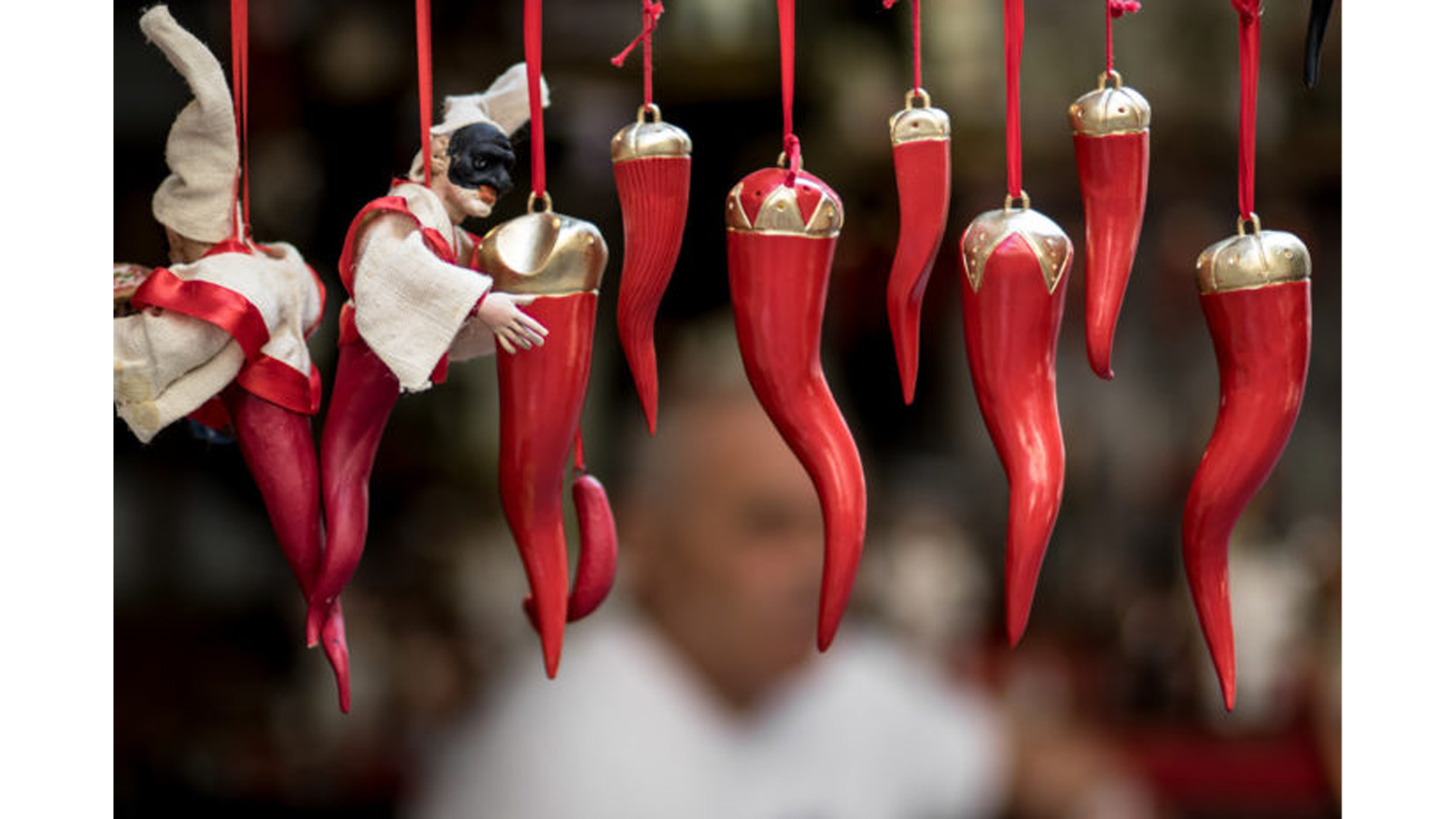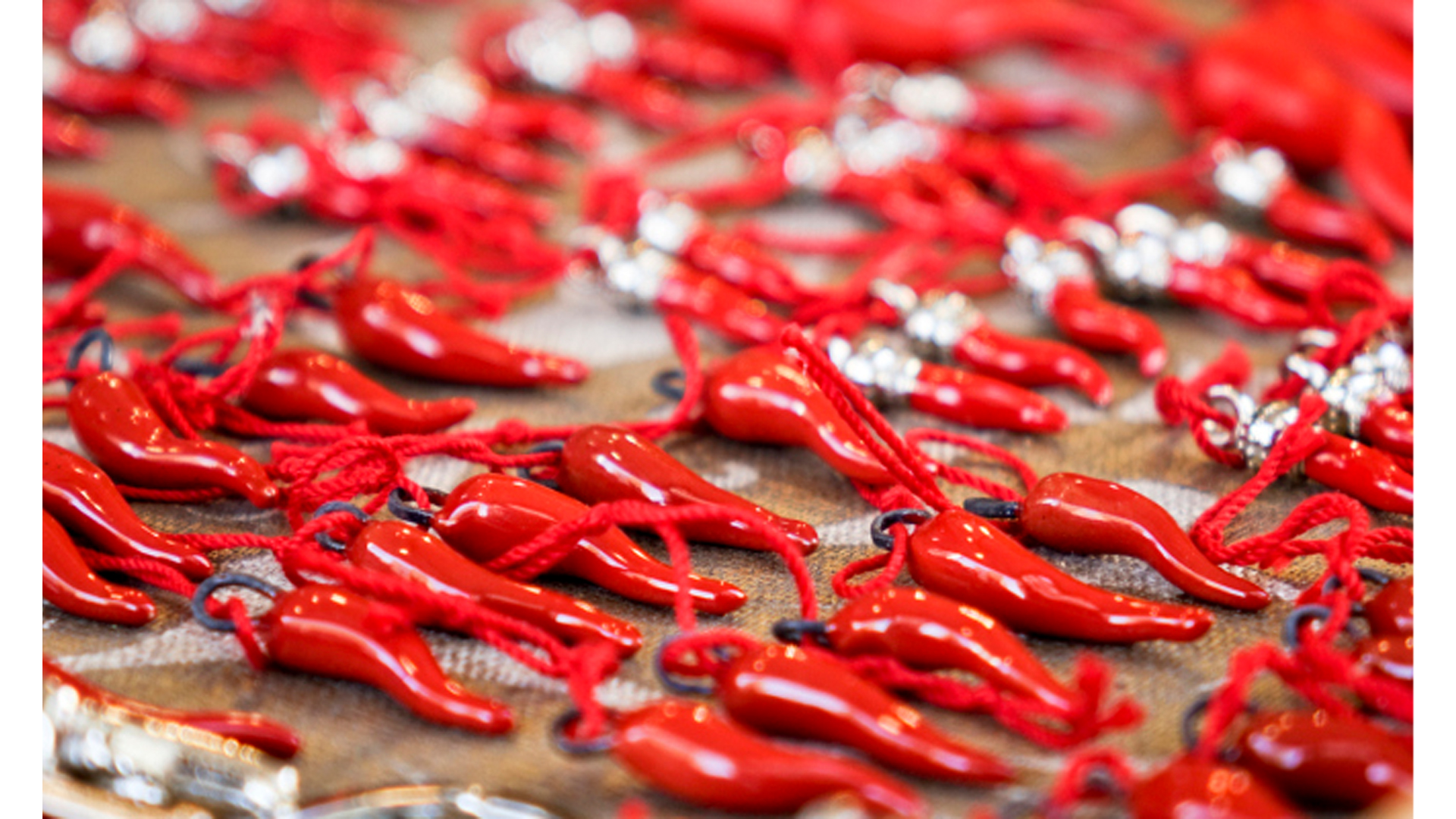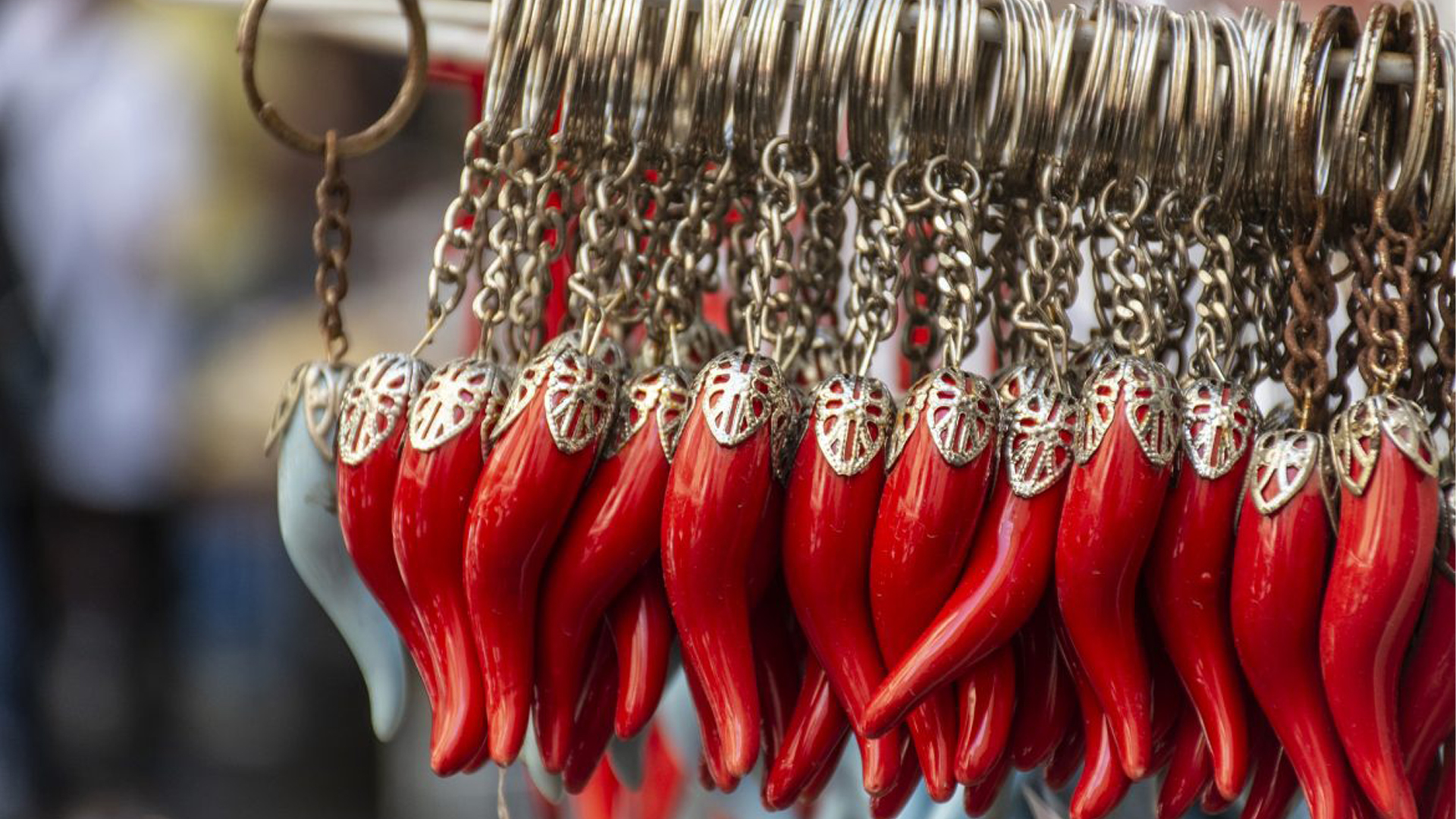The Neapolitan horn is among the most recognized Italian symbols in the world. It’s red, with a slight curve, which often leads it to be misidentified as a peperoncino, a chili, and is a talisman believed to ward off the malocchio, the evil eye. The Neapolitan horn is usually sold as a charm, for bracelets and necklaces, or as a keychain. It is also sold in bundles, alongside garlic, to hang from one’s doors and protect their household. While the horn has been commercialized and is today sold in bulk to tourists, it is still widely used by and believed in by Neapolitans, who are a traditionally superstitious people.

(Photo Credit: zetatielle.com)
The origins of this talisman can be traced back to the Neolithic period, also referred to as the New Stone Age, approximately between 8,000 and 6,000 years ago, according to Jstor. During this era, animal horns were considered to be symbols of strength and were therefore considered to bring good luck. For the ancient Romans, the horn became a symbol of virility and fertility, according to Napolilke. Due to its phallic shape, it became associated with the god Priapus, the protector of livestock, gardens, and male genitalia, according to Britannica.

(Photo Credit: bembodesign/iStock)
The horn as we know it today stemmed from the Middle Ages, when it began to be produced in red coral, which was believed to hold magic against the evil eye. According to Napolilike, the color red was chosen because of its similarity to blood and fire, symbols of life. Red also symbolized victory over enemies, such as the Devil.
Superstition says that the evil eye is a curse most often caused by someone’s jealousy. It is believed that the evil eye is particularly harmful to nursing mothers, babies, and male sperm. It can also bring harm to livestock and fruit trees.
Asia London Palomba
Asia London Palomba is a trilingual freelance journalist from Rome, Italy. In the past, her work on culture, travel, and history has been published in The Boston Globe, Atlas Obscura, The Christian Science Monitor, and Grub Street, New York Magazine's food section. In her free time, Asia enjoys traveling home to Italy to spend time with family and friends, drinking Hugo Spritzes, and making her nonna's homemade cavatelli.

